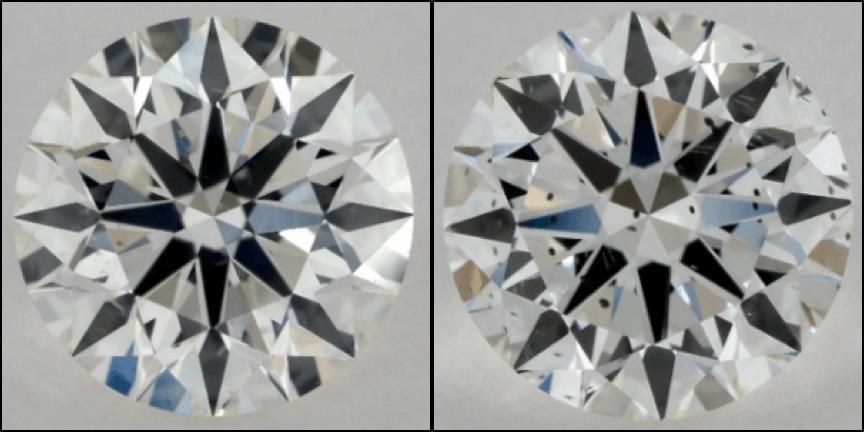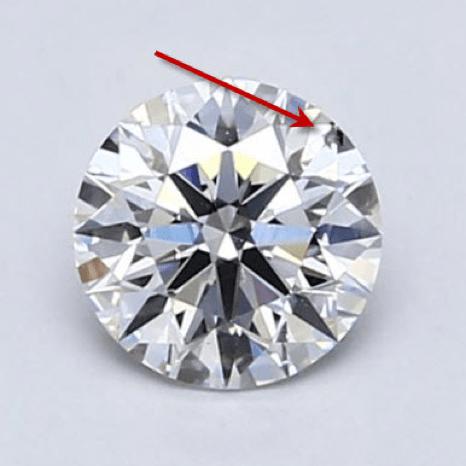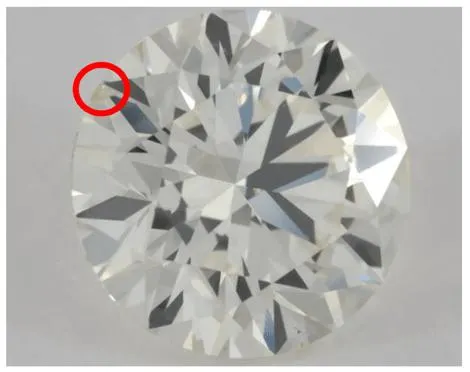What are SI1 (Slightly Included 1) clarity diamonds?
SI1 diamond refers to a specific grade of clarity for diamonds based on the Gemological Institute of America (GIA) clarity scale. SI1 stands for "Slightly Included 1," indicating that the diamond has slight inclusions that are visible under 10x magnification.
They may not be easily seen with the naked eye. These inclusions are usually small and do not significantly affect the diamond's overall beauty or brilliance. SI1 diamonds offer a balance of quality and value, making them a popular choice for those seeking a beautiful diamond with good clarity at a more affordable price point.
The Details About SI1 Clarity Diamonds
If you choose carefully, you can land yourself an eye-clean SI1 diamond beauty for a fraction of the cost of those budget busting show-offs in the VVS and even VS ranges. This clarity band can get a bad rap, but there are a few stunners to be found.
The trick with SI1s, is to be very vigilant in locating those inclusions and blemishes and then determine how they might impact both the aesthetics and the physical integrity of the diamond once it’s in the ring setting. Remember, just because the inclusions in an SI1 can easily be found by a trained professional under 10x magnification does not mean they can be seen with the naked eye.
Find an Eye-Clean SI1
When looking for a good SI1 diamond, you first want to determine if the stone is eye-clean or not. To do this, you need to take a look at a magnified photo or video of the stone itself. Let’s inspect two different SI1 diamonds:

Both of these diamonds are SI1, but there are obvious differences between the two of them.
The one on the left has a few clouds and crystals, but these are spread out nicely around the diamond and therefore will not have an impact on the overall look of the stone. In fact, it will be completely eye-clean in real life.
The diamond on the right is another story entirely though, and is what one might call a hot mess. It has crystals and clouds - the same types of inclusions present in the other diamond - however the difference here is the color and location of those inclusions. Black crystals under the table facet are being reflected all around the stone, making them look even more noticeable and downright nasty. This stone will most certainly not be eye-clean.
Prongable SI1 Inclusions
That being said, you do not need to automatically disregard an SI1 if it has a black crystal or other noticeable inclusion. Why not? Because the location of this inclusion might be ‘prongable’, meaning the issue can be easily hidden by the ring setting.

That undesirable blotch can easily be covered with a prong, giving you a perfectly eye-clean stone and some leftover cash in your wallet to boot.
Unfortunately, it’s not just the aesthetic of an SI1 you need to be aware of. What might look like a harmless blemish at first sight, may turn out to be a serious issue in terms of durability. With the stone below for example, the feather on the girdle looks fairly innocuous and ‘prongable’ (look at us using our fancy diamond terminology), but it could easily cause the diamond to chip while being set in a ring…or any time thereafter.

With all of that in mind then, the golden rule for buying SI1 clarity grades is to make sure you can view the stone in as many ways as possible. If the stone does not come with a full diamond report (with a plot showing the inclusions), ask for one.
Beware though, the plot doesn’t tell you everything. In fact, a clean plot on an SI1 diamond can be a huge red flag and should be avoided. In addition to a plot showing the inclusions, you must also get at least 10x magnification images and videos for your stone.
VS2 Clarity Diamonds


SI1 Clarity Diamond FAQs